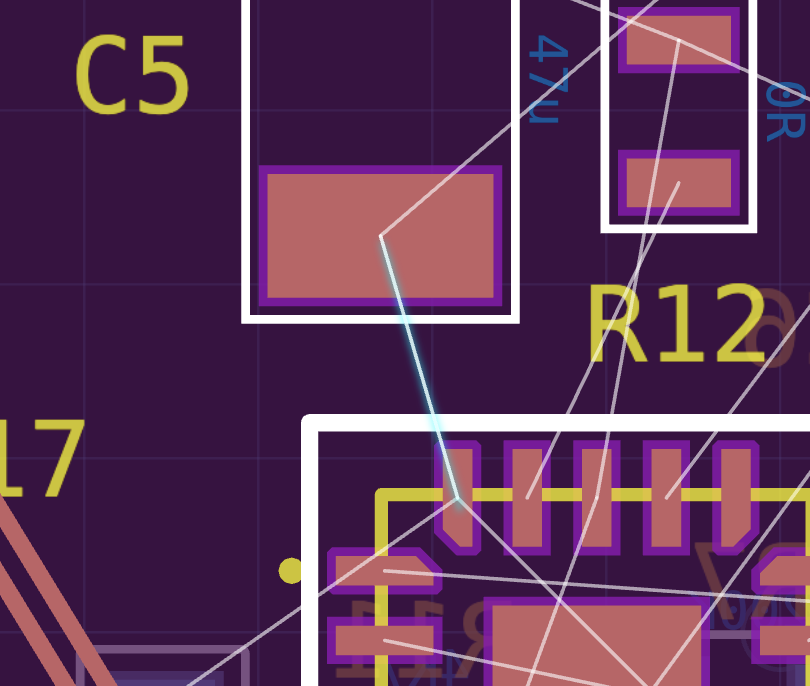Short Trace¶
The short-trace statement identifies two component pads that have a high affinity to one another. This most obvious example is bypass capacitors applied to supply pins.
This information is used in multiple places:
- The placer uses this information to create an initial layout that places these pads close together.
- The Board UI uses this information to make a unique rats nest representation.
This statement is only valid in the pcb-module context.
Signature¶
short-trace(<REF-1>, <REF-2>)
<REF-*>- The arguments toshort-traceare expected to be refs toSinglePinports of a component instance.- Each port must be connected to the same net.
- Providing a ref to a
pcb-moduleport will have no effect. The ref must be to a port on a component instance that maps to a physical pad of the component's land pattern.
Usage¶
The most common usage pattern for short-trace is for bypass capacitors.
pcb-module microcontroller:
inst U1 : MCU
inst C5 : ceramic-cap(0.1e-6)
net VDD (C5.p[1], U1.VDD)
net GND (C5.p[2], U1.GND)
short-trace(C5.p[1], U1.VDD)
If we examine what this looks like in the board view, we will see something like this:

Notice that the connection between C5 and the QFN package component, we see that the rat's nest has a blue hue to it. This is the signature for short-trace connections in the board view.
This is a very useful tool during layout for determining which bypass capacitors should be placed where. Instead of referring back to the schematic or the datasheet for a part, we can immediately know where a particular cap needs to go.